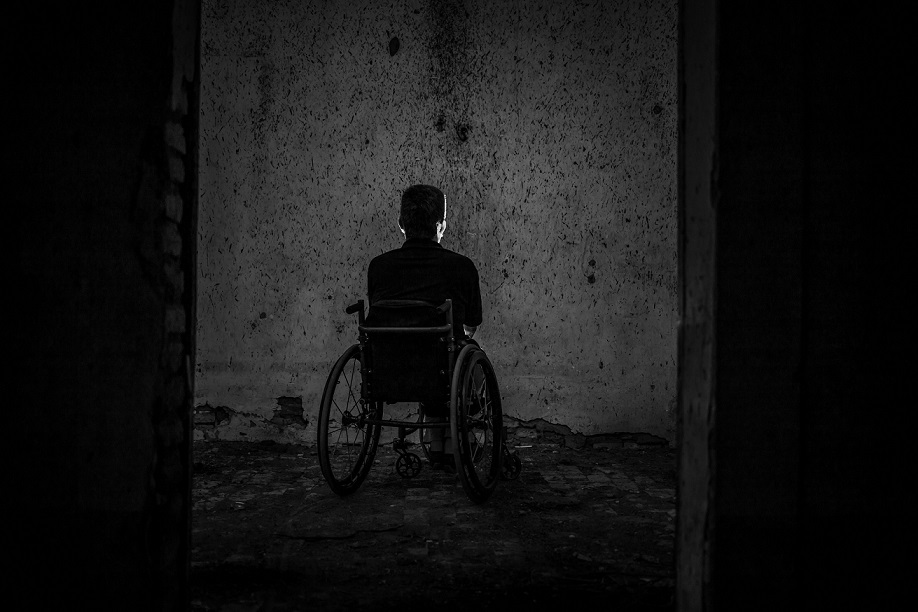The disabled community is a marginalised group in Malaysian society.
Most people regard them as an aberration of life and abnormal because of their disability. People feel squeamish, afraid to engage with them, and avoid them out of fear of abnormality. Most turn a blind eye.
How do we regard this disabled community that exists within our society but is ignored because of their perceived abnormality?
There is a stigma against them.
But let us be reminded that they are God’s creations and as human as the rest of us.
There is a wide range of disabilities – from severe to mild, and even those that go undetected.
The most severe are cerebral palsy cases – the result of abnormal development or damage to the parts of the brain that control movement, balance, and posture.
Sub-types include spastic cerebral palsy (stiff muscles), ataxic cerebral palsy (poor coordination in locomotion), and dyskinetic cerebral palsy (writhing movements).
Cerebral palsy causes varying degrees of impairment. These include diplegia – paralysis affecting symmetrical parts of the body, such as both legs; triplegia – paralysis of three limbs, usually both legs and one arm; hemiplegia – paralysis of one arm and leg on one side of the body; and quadriplegia – paralysis of all four limbs.
Then there is autism (autism spectrum disorder), with varying severity of anxiety, depression, attention deficit hyperactivity disorder (ADHD), epilepsy, and intellectual disability.
Cognitive impairment such as dyslexia is quite common among school children, yet often goes undetected because teachers are not trained to identify such cases, dismissing them as laziness or recalcitrance.
This community is usually overlooked, especially those with severe cerebral palsy, as they are not visible in the mainstream of social life.
They often attend specialised schools such as Spastic Centres, which specifically cater for such children. There are centres in Penang, Kuala Lumpur. There is also the Sarawak Society for Parents of Children with Special Needs (Pibakat) in Kuching.
To be fair, the government has addressed less serious cases through special needs education in the school system. The 13th Malaysia Plan allocated funds for PwD (persons with disability), though these remain insufficient for a holistic approach to the needs of such children and their families.
What is most troubling is the general ignorance and apathy towards this community, which influence government policies that mainly focus on the able-bodied.
Consider the recent case of Lim Chin Hong, a top STPM scorer with straight As and a CGPA of 4.0, whose application to study electrical engineering was rejected because of his physical disability. At the age of seven, he was diagnosed with haemangioma, a tumour in the blood vessel of his right knee. After surgery, he relied on crutches as his right calf shrank. In 2023, his right lower leg was amputated. It was only after his plight was highlighted in the media that Higher Education Minister Datuk Seri Zambry Abdul Kadir assured he would be considered for engineering programmes at a public university.
Similarly, an autistic student, Aniq, who scored a CGPA of 3.8 in his STPM, was denied a place at local universities.
What we need is a proactive, not reactive, government administration.
Bureaucracy is robotic. It cannot see beyond the confines of set directives. The government has not adequately factored in the plight of the disabled in education, employment, or funding – beyond the usual political rhetoric that claims their needs are being addressed.
In fact, the social structure and needs of this community should be included in our educative system so that the able-bodied understand their existence and predicament.
Universiti Sains Malaysia once took up this challenge within the context of community advocacy for special needs children, initiated by then vice chancellor Professor Emeritus Tan Sri Zulkifli Abdul Razak in the early 2000s.
I developed a programme for cerebral palsy students to research their responses to non-invasive stimuli of music, movement, and drama within the context of arts therapy. The intervention produced positive results in addressing their disabilities.
But successive vice chancellors were lukewarm towards the project because it did not contribute to university rankings, unlike articles in high-impact journals which usually have limited readership and end up as archival material.
Universities have lost the humanity in education, focusing only on STEM, AI, and aerospace programmes.
Community advocacy and research projects involving the disabled, the destitute, and the plight of PwD are not given due recognition.
There must be a change in attitude and policy on the part of the government and educational agencies to be sympathetic towards the marginalised disabled community.
We may not realise how fortunate we are compared with disabled persons.
We should spare some thought and time to engage with these members of our community. With our efforts and involvement, we can make a difference to their wellbeing and that of their families, and help draw them into the mainstream of social and cultural life.
The views expressed here are the personal opinion of the writer and do not necessarily represent that of Twentytwo13.












